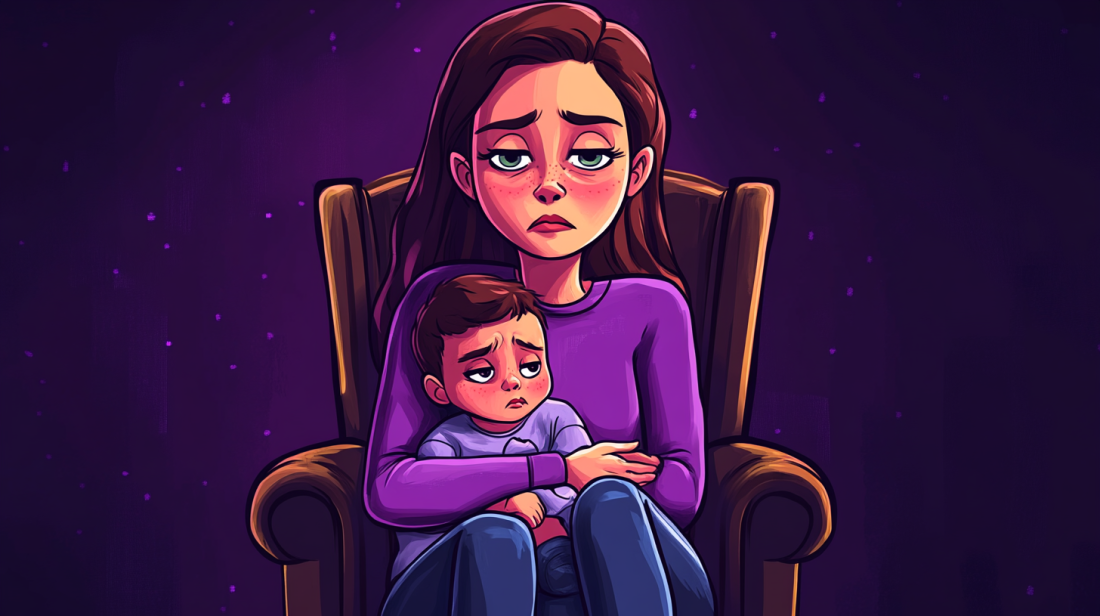ChatGPT vs. chatbot – What’s the difference?

With all the new AI tech out there, business leaders are bombarded with terms like “ChatGPT”, “Chatbot”, “Generative AI”, etc.
It can be very confusing, making it hard to judge what’s best for your business. So, let’s break it all down to help you choose the right tool. Before we jump to the difference between ChatGPT and chatbots, we want to bust some myths around AI and ChatGPT so that you are well informed.
Myth 1: All AI is ChatGPT.
ChatGPT is great example of Generative AI technology, which generates human-like text based on the input it gets. But it does not represent all AI (think facial recognition or self-driving cars).
Myth 2: Conversational AI and Generative AI are two sides of the same coin.
Generative AI creates all kinds of original things (text, images, music) just like humans. (Ex: ChatGPT, Mid Journey, etc)
Conversational AI is type of AI focused on solving specific problems by talking and interacting with other systems. (E.g. chatbots)
Myth 3: Generative AI is not fit for customer interactions because ChatGPT hallucinates.
ChatGPT is not a product used for customer interactions like Intercom or Zendesk. It’s a product that can talk like human and help them with their tasks.
But yes, the product comes with many risks, such as:
- It might struggle to understand complex questions or nuanced customer requests 🤨
- It can hallucinate, give incorrect answers or fake information 😨
- It might even redirect potential customers to your competitors 😱
So, I CAN’T use ChatGPT for customer interactions?
The short answer is no, but you CAN use the underlying technology—Generative AI.
Before ChatGPT existed, businesses could still automate customer interactions with a tried-and-tested method: chatbots. But now that Generative AI and ChatGPT has emerged as an alternative, the question is, which one is the best tool for your business?
ChatGPT(Generative AI) vs. chatbots
When selecting the right tool for your business, you’ll consider factors like risks, costs, potential long-term benefits, and how easy it is to implement.
For automating customer interactions, here are the lenses to try on:
- Customer Experience and engagement: Will it benefit my business by keeping my customers engaged and happy?
- Accuracy, flexibility and predictability: How well can the system handle new, unexpected inputs while still providing consistent, reliable responses?
- Development and maintenance: What are the upfront and long-term costs and resources needed to use this new tool? How long does it take to deploy?
- Scalability: Can this new system adapt to changing business needs, and how much does it cost to upgrade it?
- Ease of integration: Can it be easily incorporated into existing business processes without requiring the existing process to change too much?
- Business growth implications: Will it help my business become successful by simplifying operations, and providing data-driven insights for constant growth?
Here’s a quick comparison of ChatGPT(Generative AI) vs chatbots.
Criteria |
ChatGPT (Generative AI) |
Chatbots |
|---|---|---|
| Accuracy, flexibility and predictability | Offers flexible, context-aware responses but can be unpredictable if not fine-tuned. | Provide predictable, consistent responses but lack flexibility. |
| Development and maintenance | Needs initial training and periodic re-training but adapts better to new scenarios. | Require continuous manual updates for new scenarios. |
| User Experience | Can deliver more engaging and natural interactions. | May feel repetitive and rigid to users. |
| Cost-effectiveness | More expensive initially but potentially more cost-effective long term. | Generally less costly in the short term. |
| Scalability | Highly scalable, improving over time without proportional increases in cost or effort. | Scalable within the scope of their scripts; expansion requires manual updates. |
| Integration ease | Requires more sophisticated integration efforts. | Easier to integrate due to straightforward logic and predefined rules. |
| User engagement quality | Higher engagement quality due to personalized, dynamic responses. | Lower engagement quality due to lack of complex personalization. |
| Implications on business growth |
|
|
Let’s take a deep dive (backed with data-driven insights) into how chatbots and ChatGPT/Generative AI are different, and help you make an informed decision.
The reliability showdown: ChatGPT vs. chatbots
Customers who need more nuanced assistance are likely to feel extremely dissatisfied and disengage with chatbots. Forbes claims that 78% of consumers have interacted with a chatbot in the past 12 months, but 80% said using chatbots increased their frustration level. And yet, Gartner predicts that by 2027, chatbots will become the main source of communication for customer service channels!
In comparison, ChatGPT produces responses that feel more natural and personalized, thereby enhancing user satisfaction. We know how good it is at creative things, but BCG’s study shows that when applied to business problem-solving tasks, GPT-4 underperformed by 23%.
| Criteria | Chatbots | ChatGPT/Generative AI |
|---|---|---|
| Advantage |
|
|
| Disadvantage |
|
|
Comparing user experience: Chatbots and ChatGPT capabilities
Customers who need more nuanced assistance are likely to feel extremely dissatisfied and disengage with chatbots. Forbes claims that 78% of consumers have interacted with a chatbot in the past 12 months, but 80% said using chatbots increased their frustration level. And yet, Gartner predicts that by 2027, chatbots will become the main source of communication for customer service channels!
In comparison, ChatGPT produces responses that feel more natural and personalized, thereby enhancing user satisfaction. We know how good it is at creative things, but BCG’s study shows that when applied to business problem-solving tasks, GPT-4 underperformed by 23%.
| Criteria | Chatbots | ChatGPT/Generative AI |
|---|---|---|
| Advantage |
|
|
| Disadvantage |
|
|
One thing is clear—the ability to generate human-like interactions is crucial for maintaining customer interest and keeping them engaged, especially as user expectations evolve.
Development, maintenance, cost, and scalability
Chatbots are fairly straightforward to develop and maintain, and are more cost-effective initially. But as user demands change, updating chatbots to handle new types of queries becomes laborious, as these changes need to be made manually.
On the other hand, Generative AI requires substantial upfront costs and resources during the initial development. But it offers better scalability as it improves over time without much increase in cost or effort, which make it more adaptable and relevant in the long term.
| Criteria | Chatbots | ChatGPT/Generative AI |
|---|---|---|
| Advantage |
|
|
| Disadvantage |
|
|
ChatGPT vs. chatbots: Integration challenges
Structured chatbots, due to their predictable and rule-based nature, are typically easier to integrate with existing systems.
Generative AI systems require more complex integration efforts. This complexity can impact deployment times and resource allocation, and may even disrupt existing business flows.
| Criteria | Chatbots | ChatGPT/Generative AI |
|---|---|---|
| Advantage |
|
|
| Disadvantage |
|
|
The role in driving business growth
Structured chatbots offer a solid foundation for businesses looking to improve customer experience and business efficiency. They can personalize interactions to a certain degree and meet basic user expectations. Additionally, chatbots can analyze past interactions to provide data-driven insights on engagement, goal achievement, and potential workflow improvements.
Unlike chatbots, ChatGPT can enhance customer experience by providing personalized and tailored responses for each user’s unique situation. Additionally, it can automate a wider range of inquiries, freeing up human agents for more complex tasks.
In terms of analysis, Generative AI goes beyond, by analyzing and predicting user preferences and behavior patterns. This data empowers businesses to make data-driven decisions proactively.
| Criteria | Chatbots | ChatGPT/Generative AI |
|---|---|---|
| Advantage |
|
|
|
Disadvantage |
|
|
Can chatbots and ChatGPT work together?
Like Batman and the Joker, we’re used to seeing Structured chatbots and ChatGPT as complete rivals. But what if they teamed up?
By combining the two technologies, businesses can develop AI Agents that strategically avoid the risks of pure Generative AI (like giving irrelevant or harmful responses). At the same time, it overcomes the rigidity of completely structured chatbots.
Adding the reliable nature of chatbots to the flexible abilities of Generative AI means that businesses can create a more powerful digital assistant, one that is capable of:
- Automating a wide variety of interactions
- Enhancing customer experience with personalized and tailored responses
- Being reliable, consistent, and safe
- Helping businesses get data-driven insights for future growth and improvement
Does such a balanced solution exist that takes advantage of the best parts of both technologies?
Unlock the combined potential of both technologies
At Tars, we’ve used a hybrid approach to give businesses the best of both worlds—a custom AI Agent that is tailored to fit their business needs, in the familiar guise of a Conversational interface.
Reliable and flexible: Your custom AI Agent works on a controlled knowledge base (RAG Architecture) that is specific to your business, limiting hallucinations and inaccuracies. It has an inbuilt self-evaluation AI to test whether the quality of its answers meets business expectations. Powered by Conversational AI, it can expertly navigate complex queries while providing personalized responses.
Easy development, maintenance, and scalability: Our team at Tars builds the Agent initially based on your business needs. Post that, your teams can manage, tweak, and update it using a no-code interface. It can be deployed across multiple channels, including your website and WhatsApp. Additionally, the No-Code drag-and-drop canvas makes it easy for anyone to build Agentic workflows, either from scratch or by customizing one of thousands of templates.
Easy to integrate: Your AI Agent can automate various tasks, like fetching data from external databases or triggering actions in other applications. With multiple MCP-based tooling options, you can easily integrate tools like HubSpot, Notion, Slack, Google Sheets, and many more.
Automates and enhances the entire customer journey: As an interactive expert that can understand the context and underlying intention in conversations, the AI Agent provides tailored, automated solutions. It ensures personalized assistance to your customers and prospects and helps them make informed decisions.
Provides data-driven insights for business growth: The AI Agent helps your teams gain valuable insights into customer preferences, engagement patterns, potential bottlenecks, and areas for improvement.
The best of AI and chatbots in one: AI Agents!
These custom-made AI Agents deliver accurate and personalized responses thanks to a RAG and self-evaluation. They are created to solve specific business problems, and their easy integration and management enhance every aspect of the customer journey.
Explore use cases of AI Agents across industries in Finance, Government, Healthcare, and Insurance.
Your industry isn’t listed here? Do explore your use case in our AI Agent Marketplace.
I am a content creator and marketer and a Conversational AI specialist. I enjoy crafting informative content that engages and resonates with my audience. In my spare time, I like to explore the interplay between interactive, visual, and textual storytelling, always aiming to bring new perspectives to my readers.
- ChatGPT(Generative AI) vs. chatbots
- The reliability showdown: ChatGPT vs. chatbots
- Comparing user experience: Chatbots and ChatGPT capabilities
- Development, maintenance, cost, and scalability
- ChatGPT vs. chatbots: Integration challenges
- The role in driving business growth
- Can chatbots and ChatGPT work together?
- Unlock the combined potential of both technologies
- The best of AI and chatbots in one: AI Agents!


Build innovative AI Agents that deliver results
Get started for freeRecommended Reading: Check Out Our Favorite Blog Posts!

AI Agent builders, we need to have a chat about AI’s gender bias

Time is money, so we created AI Agents that help founders save both!

How to Get Your Startup Idea Validated by Paul Graham or Kevin O’Leary? AI Agent to the Rescue

Our journey in a few numbers
With Tars you can build Conversational AI Agents that truly understand your needs and create intelligent conversations.
years in the conversational AI space
global brands have worked with us
customer conversations automated
countries with deployed AI Agents




